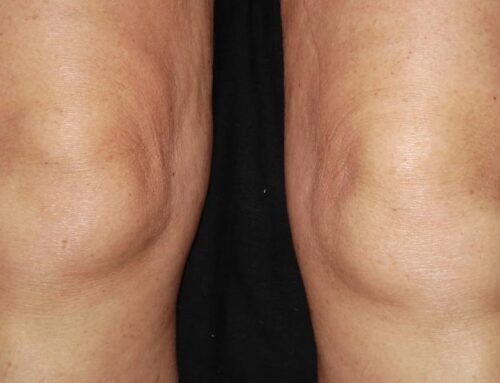Participating in sports carries the risk of being injured. Learning about the most common sports injuries can help you avoid them, or treat them correctly when they do occur.
From running marathons to playing football, participating in sports can increase your risks of sustaining certain types of injuries. Sports injuries can occur for a number of reasons, including being hit by another player, not being properly trained, using defective equipment, and not stretching before strenuous activity. While some common sports injuries are minor, others can be serious enough to keep you from playing for weeks or even months.
1. Knee Injuries
Knee injuries are one of the most common sports injuries you can sustain. Knee injuries are especially common in sports like football, basketball, soccer, and baseball due to the stress placed on these joints from running, jumping, kicking, or sudden impact. Knee injuries can present with a range of symptoms from mild tenderness caused by inflammation to severe damage or tears in ligaments or cartilage.
Major knee injuries, such as anterior cruciate ligament tears or damage to soft tissue under the kneecap, can prevent athletes from playing for several months while the affected area heals. Treatment options for knee injuries depend on what type of injury occurs and how serious it is. Milder injuries can sometimes be treated with physical therapy and rest, while severe injuries might require orthopedic surgery to repair or replace damaged ligaments or cartilage.

2. Sprains and Strains
Sprained ligaments and strained muscles are also common sports injuries, since they can occur during almost any type of athletic activity. Sprains are often the result of stretching a ligament too far or tearing it, while strains occur when you pull a muscle. A stretch occurs when sudden movement pulls the tendon longer than its normal maximum length and then the tendon rebounds, causing inflammation and pain. A tear occurs when the tendon or ligament separates. A pulled muscle occurs when a muscle is stretched beyond its normal length and it causes strain, swelling and inflammation.
Ankle sprains and hamstring strains are two of the most common types of sprains and strains that affect athletes. These injuries can range from mild to severe—a mild injury can cause tenderness, pain, and limping while a severe sprain means your ligaments or tendons are completely torn.
Treatment options for these injuries include resting the affected area, taking over-the-counter pain medications for temporary pain relief, and doing stretching exercises. If severe cases do not respond to other pain management treatments, orthopedic surgery to repair your damaged ligaments or tendons might be necessary.
3. Shin Splints
Shin splints are a common sports injury amongst runners, especially when running on concrete or other hard surfaces. This type of injury causes pain in the lower part of your leg, typically in the outer area where you can see the shape of your bone.
Shin splints usually heal on their own with at-home treatments, such as resting, applying ice to the affected area, and taking nonprescription pain medications. When shin splint pain does not subside with these treatment methods, it is important to have your condition evaluated. In some cases, shin splint pain might actually be caused by a stress fracture, which requires a much longer time to heal. The 5 Most Common Sports Injuries & How to Treat Them
If your pain does not subside with rest, consider scheduling an orthopedic evaluation to have your condition properly diagnosed.
4. Dislocated Joints
Joint dislocations happen when one or more bones in a joint are pushed out of their normal socket. Dislocations occur frequently in football and other contact sports, although stretching too far can also cause them. Hands and fingers are the most commonly affected areas with this type of injury, but dislocations can also occur in your shoulders, knees, hips, and elbows.
Dislocations require immediate medical care in order to realign the joint. Lingering pain and other symptoms can occur if the soft tissue around the affected joint is damaged. If you have experienced a dislocation, visit your doctor or an urgent care center immediately to have the joint reset and avoid long-term damage.
5. Acute and Stress Fractures
Acute fractures happen when one or more bones are injured as the result of a specific event, such as being tackled in football or falling while running. Stress fractures occur when you put repeated stress on one or more bones over time when playing sports, such as jumping during a tennis or volleyball match. The 5 Most Common Sports Injuries & How to Treat Them
Fractures require immediate medical attention to prevent the injury from becoming worse. Severe fractures or complete breaks may require surgery in order to make your bone whole again.



